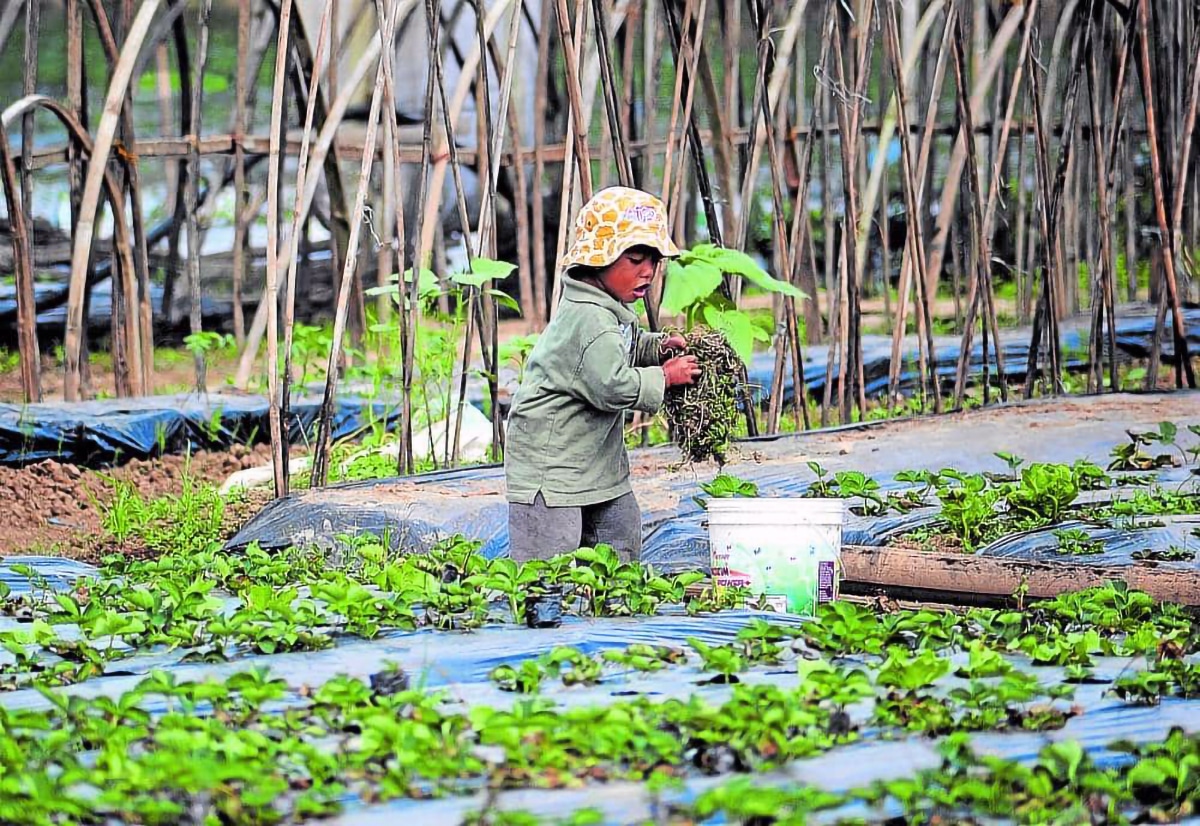Food insecurity linked to malnutrition in Cordillera

RIGHT DIET Many communities in the Cordillera feed their children with food grown on mountain farms, like vegetables in Benguet province as shown in this 2015 photo. But government nutritionists say farmers need to increase productivity for households that have limited access to food to solve childhood malnutrition. —EV ESPIRITU
BAGUIO CITY — Food insecurity has been linked to household malnutrition affecting children in the Cordillera, although most towns in the region grow their vegetables and grains, government nutritionists said in this week’s program celebrating the 50th Nutrition Month.
The prevalence of malnutrition, stunting (shortness), and wasting (weight is too low for the body height) among toddlers and school-age children has been dropping in Baguio City and the provinces of Ifugao, Abra, Kalinga, Benguet, Apayao and Mountain Province since the COVID-19 pandemic broke out, said Bella Basalong, the Cordillera’s nutrition program coordinator at the National Nutrition Council (NNC).
For instance, the prevalence of stunting for children below 5 years old was 10.55 percent in 2018, which slid slightly to 10.18 percent in 2019, down sharply to 9.71 percent in 2020 when the community lockdowns began, 8.58 percent in 2021 and 7.35 percent in 2022, according to the 2023–2028 Regional Action Plan on Nutrition (RAPN) launched on Tuesday.
READ: SWS: Families who suffer from hunger rises to over 14%
Wasting among Cordillera infants and children between 1 and 4 years old was measured at 2.1 percent in 2018, dropping to 1.9 percent by 2019, 1.73 percent in 2020, 1.47 percent in 2021, and 1.45 percent in 2022, the RAPN said.
But wasting prevalence among grade school pupils in the region began an upward progression once schools reopened when pandemic restrictions eased, Basalong said.
The latest RAPN showed wasting rise to 5.65 percent in School Year (SY) 2019-2020 and 5.39 percent in SY 2022-2023 after dipping from 5.45 percent in SY 2017-2018 to 4.91 percent in SY 2018-2019.
Postpandemic
The NNC also found an increase in the prevalence of wasting and severe wasting among Cordillera high school students to 9.42 percent in SY 2019-2022 and 8.28 percent in SY 2022-2023, after dropping from 8.03 percent in SY 2017-2018 to 7.17 percent in SY 2018-2019.
The NNC has been tracking the diet and weight of 158,412 Cordillera infants and children aged 1 to 4, 171,000 children from 5 to 9 years old, and 354,047 children as young as 10 years old and teenagers as old as 19 (based on the 2020 census).
Food insecurity at the household level appeared to be an “underlying cause of malnutrition [that] must be dealt with” to sustain the progress made in curbing malnutrition, according to the latest RAPN.
READ: The nexus between food insecurity and national security
The latest nutrition survey said Baguio and all Cordillera provinces, except for Abra, have a much lower degree of food insecurity compared to the national average.
The RAPN observed that “the food sufficiency levels for the period 2019-2022 showed that carbohydrate sources were above 100 percent and vegetables were 200 percent [in the mountain communities].”
Yet despite the abundance of staple crops, “food insecurity among households in the region still persists, it said.